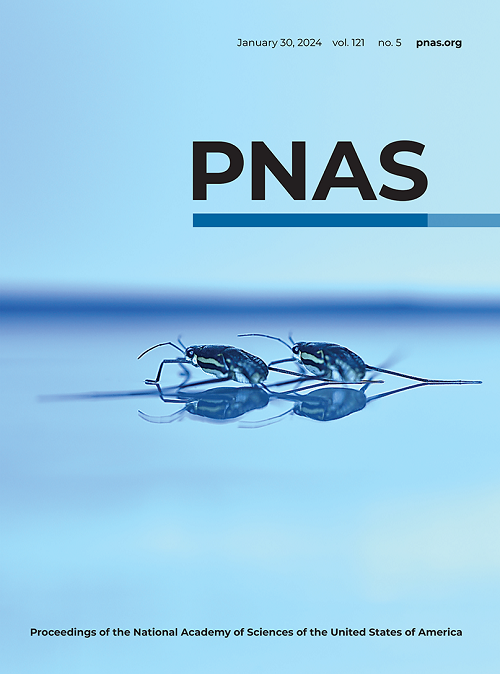SARS-CoV-2 infection induces ZBP1-dependent PANoptosis in bystander cells.
IF 9.4
1区 综合性期刊
Q1 MULTIDISCIPLINARY SCIENCES
Proceedings of the National Academy of Sciences of the United States of America
Pub Date : 2025-07-08
DOI:10.1073/pnas.2500208122
引用次数: 0
Abstract
Virus-induced excessive inflammatory response is a key contributor to pathology in respiratory viral infections. However, the underlying mechanisms by which viral infection provokes intense inflammatory reaction and how sustained inflammation leads to tissue damage are not fully understood. Using severe acute respiratory syndrome coronavirus 2 (SARS-CoV-2) infection as an example, our research demonstrates that SARS-CoV-2 infection can induce PANoptosis in bystander cells, contributing to the persistence of inflammatory responses. Specifically, the activation of cyclic GMP-AMP synthase (cGAS)-stimulator of interferon genes (STING) in infected cells leads to the secretion of 2'3'cGMP-AMP, TNF-α, and IFN-β. These molecules activate STING-induced autophagy-mediated ADAR1 degradation, resulting in the accumulation of Z-nucleic acid, which subsequently triggers ZBP1-dependent PANoptosis in bystander cells. Additionally, inhibiting the cGAS pathway or knocking out STING effectively reduces PANoptosis and alleviates the pathology associated with SARS-CoV-2 and influenza A virus infection in mouse models. Overall, our findings reveal the unexpected role of PANoptosis in bystander cells during SARS-CoV-2 infection as a mechanism driving pathological damage and persistent inflammatory responses. Targeting this process may offer a promising strategy to mitigate tissue damage in COVID-19 as well as other viral infections and inflammatory conditions.SARS-CoV-2感染诱导旁观者细胞zbp1依赖性PANoptosis。
病毒诱导的过度炎症反应是呼吸道病毒感染病理的关键因素。然而,病毒感染引发强烈炎症反应的潜在机制以及持续炎症如何导致组织损伤尚不完全清楚。以SARS-CoV-2感染为例,我们的研究表明,SARS-CoV-2感染可诱导旁观者细胞PANoptosis,导致炎症反应持续存在。具体而言,感染细胞中环GMP-AMP合成酶(cGAS)-干扰素基因刺激因子(STING)的激活导致2'3'cGMP-AMP、TNF-α和IFN-β的分泌。这些分子激活sting诱导的自噬介导的ADAR1降解,导致z -核酸的积累,随后在旁观者细胞中触发zbp1依赖性PANoptosis。此外,在小鼠模型中,抑制cGAS通路或敲除STING可有效减少PANoptosis,并减轻与SARS-CoV-2和甲型流感病毒感染相关的病理。总的来说,我们的研究结果揭示了在SARS-CoV-2感染期间旁观者细胞PANoptosis作为驱动病理损伤和持续炎症反应的机制的意想不到的作用。针对这一过程可能为减轻COVID-19中的组织损伤以及其他病毒感染和炎症状况提供了一种有希望的策略。
本文章由计算机程序翻译,如有差异,请以英文原文为准。
求助全文
约1分钟内获得全文
求助全文
来源期刊
CiteScore
19.00
自引率
0.90%
发文量
3575
审稿时长
2.5 months
期刊介绍:
The Proceedings of the National Academy of Sciences (PNAS), a peer-reviewed journal of the National Academy of Sciences (NAS), serves as an authoritative source for high-impact, original research across the biological, physical, and social sciences. With a global scope, the journal welcomes submissions from researchers worldwide, making it an inclusive platform for advancing scientific knowledge.

 求助内容:
求助内容: 应助结果提醒方式:
应助结果提醒方式:


